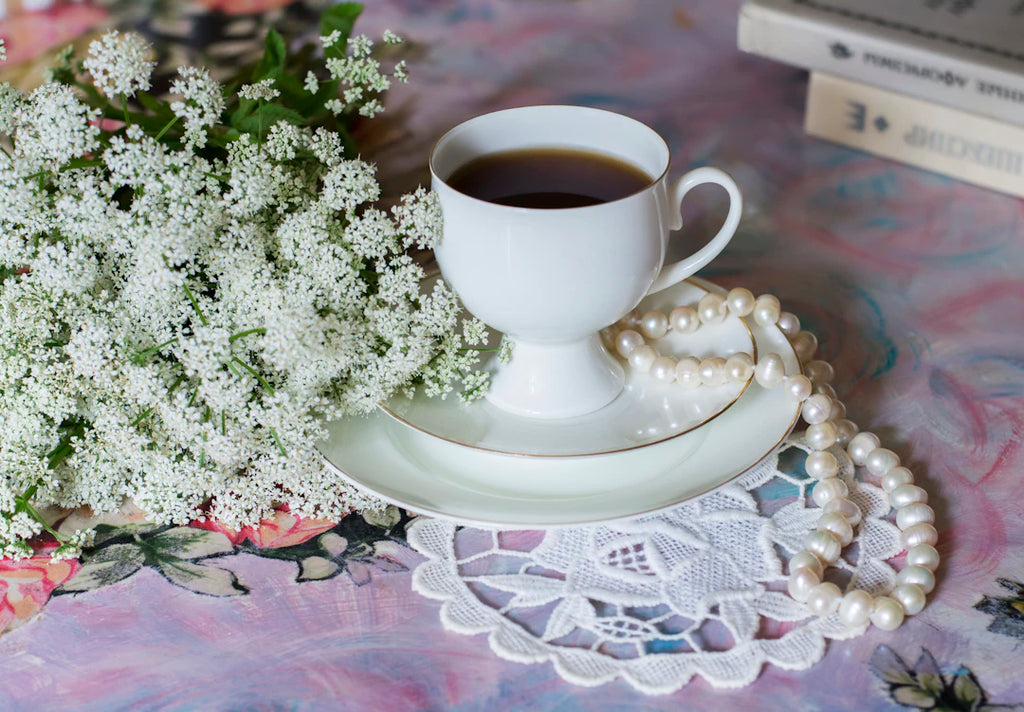The Art of Cultivating Tahitian Pearls: A Journey from Ocean to Elegance

Tahitian pearls, often hailed as the "black pearls" of French Polynesia, are one of nature's most stunning creations. Known for their unparalleled luster and dramatic colors, these gems capture the essence of their origin. This blog post explores the intricate process of cultivating Tahitian pearls, shedding light on each fascinating step that transforms a simple oyster into a luxurious piece of jewelry.
The Origin of Tahitian Pearls
The story of Tahitian pearls begins in the waters of French Polynesia, particularly around the islands of Tahiti, Moorea, and Bora Bora. The unique environment of this region provides the perfect conditions for cultivating these extraordinary pearls. The local climate, combined with the rich nutrient supply in the lagoons, makes it an ideal habitat for the black-lipped oyster, or Pinctada margaritifera, the mollusk responsible for creating Tahitian pearls.
The Black-Lipped Oyster
The black-lipped oyster is distinctive, not just because of its features but primarily because of its ability to produce pearls with a dark and captivating hue. The oyster's inner shell has a striking black color, which plays a crucial role in the resulting pearl's color spectrum ranging from deep black to shades of silver, green, and blue. In French Polynesia, these oysters can grow quite large, offering a generous nucleus for pearl formation.
The Cultivation Process
Cultivating Tahitian pearls is more than just a process; it’s an art form passed down through generations. The techniques employed ensure a sustainable and environmentally friendly approach, highlighting the local culture and respect for nature. Here’s how the cultivation process unfolds:
1. Nucleus Insertion
The journey of a Tahitian pearl begins with the insertion of a nucleus into the oyster. A trained technician carefully opens the oyster and implants a small bead made of mother-of-pearl along with a piece of mantle tissue from another oyster. This tissue holds the cells necessary to stimulate the oyster's natural defense mechanism, initiating the layering process that creates a pearl.
2. Housing the Oysters
Once the nucleus is in place, the oysters are returned to their marine environment. Typically housed in underwater mesh bags or underwater frames, they are suspended from the surface, allowing them to thrive in the nutrient-rich waters of French Polynesia. The placement is strategic, ensuring they receive optimal sunlight and nutrients while remaining safe from predators.
3. Nurturing the Pearls
Over the course of 18 months to 3 years, the oysters are nurtured. Pearling farms in French Polynesia maintain strict conditions to monitor water quality, temperature, and the health of the oysters. Farmers regularly check the oysters, removing any that show signs of disease or failure to thrive. This meticulous care ensures a high-quality end product and promotes the sustainability of the pearl farming industry.
4. Harvesting Tahitian Pearls
When the harvesting time arrives, skilled divers take to the waters, carefully retrieving the oysters. This is a moment of great anticipation; farmers hope to reveal beautiful pearls after long periods of patient waiting. Each oyster may produce one to several pearls, depending on various factors such as the oyster’s health and the environmental conditions during cultivation.
The Art of Pearl Grading
Once harvested, the pearls undergo grading based on several characteristics, including size, shape, color, surface quality, and luster. The grading process is essential for merchants and buyers, ensuring that the value of each pearl is accurately represented. Here’s what experts look for:
Size
Tahitian pearls can range significantly in size, with larger pearls often commanding higher prices. Sizes can vary from 8 mm to 20 mm, with exceptional specimens being even larger.
Shape
While perfectly round pearls are highly sought after, Tahitian pearls can also be oval, teardrop, or baroque in shape. Each shape has its charm and appeal, making them unique in their own right.
Color
The most enchanting feature of Tahitian pearls is their color. Natural shades range from black to peacock green, with undertones that can include blue, silver, and even aubergine. The deeper and richer the color, the more valuable the pearl is considered.
Surface Quality
Surface imperfections can affect the pearl's value, making those with higher surface quality more desirable. Farmers aim to produce pearls with minimal blemishes, ensuring a sleek, polished finish.
Luster
Luster is a measure of the pearl’s sheen and depth of color. High-quality Tahitian pearls exhibit a bright and reflective luster, capturing light beautifully, making them truly mesmerizing.
The Sustainable Approach to Cultivation
Sustainable pearl farming is essential to ensure that the cultivation of Tahitian pearls has minimal environmental impact. Farmers in French Polynesia employ various eco-friendly practices:
- Multiple Harvests: Farmers can continually use the same oysters for multiple harvest cycles, effectively reducing waste.
- Environmental Monitoring: Pearl farms regularly monitor environmental conditions, including water quality and marine life health, to maintain ecological balance.
- Responsible Breeding: Local farmers often practice selective breeding techniques to promote the growth of healthy oysters, encouraging genetic diversity.
The Cultural Significance
Tahitian pearls are more than just gems; they hold a deep cultural significance in French Polynesia. Traditionally, pearls were worn by chieftains and used in ceremonial attire, symbolizing wealth and status. Today, these pearls continue to play an important role in local culture, reflecting the beauty and spirit of the islands.
Craftsmanship of Tahitian Pearl Jewelry
The journey of a Tahitian pearl doesn’t end with its harvest. Artisans transform these stunning gems into exquisite jewelry pieces. Master jewelers in French Polynesia have honed their skills over generations, crafting elegant designs that marry traditional craftsmanship with modern aesthetics. Popular jewelry pieces include:
- Pearl Necklaces: A classic choice, often featuring a string of pearls varying in size and color.
- Stud Earrings: Simple yet sophisticated, these earrings showcase the beauty of a single Tahitian pearl.
- Bracelets and Rings: Designers often incorporate pearls into various accessories, making them versatile for everyday wear or special occasions.
Experience the Beauty of Tahitian Pearls
Whether worn as jewelry or admired for their natural beauty, Tahitian pearls reflect the stunning environment of French Polynesia. The cultivation process showcases the delicate balance between nature and human expertise. By understanding how these pearls are nurtured and harvested, you can appreciate the time, care, and artistry behind every piece.
Join the Tahitian Treasure Trove
As you explore the allure of Tahitian pearls, remember that they represent not only luxury but also a sustainable and reverent connection to nature. When you choose Tahitian pearls, you’re embracing a piece of the South Pacific and participating in a timeless legacy of beauty.
Through this enchanting journey from ocean floor to human adornment, allow the story of Tahitian pearls to inspire your next purchase. Discover the elegance and sophistication that only these magnificent pearls can provide, and let your jewelry collection flourish with the charm of French Polynesia!

Laat een reactie achter